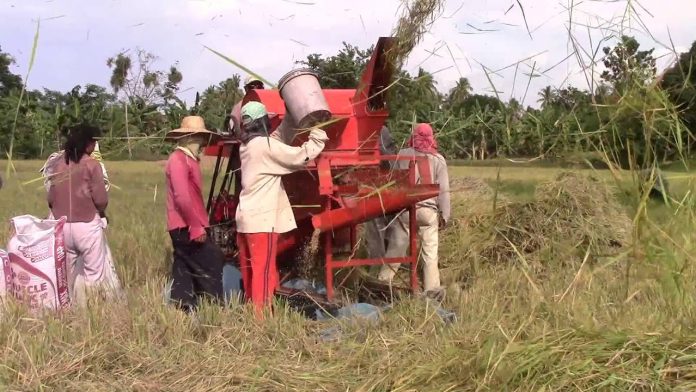
THE Department of Agriculture (DA) is discouraging importers from bringing in rice during the harvest season to help local farmers reeling from the continued drop in palay prices.
“During this main harvest ay kinausap po namin, through BPI (Bureau of Plant Industries), ang mga nag-i-import ng bigas na huwag munang magparating ng bigas nitong major harvest season of the year which is now October and November,” Agriculture secretary William Dar said during Tuesday’s briefing.
Dar, however, admitted that the DA cannot prevent importers from bringing rice in from other countries since the Rice Tariffication Law liberalized rice trading.
“Out of patriotism, ‘yun na lang ang ginagamit namin na dahilan sa pakikiusap sa lahat ng traders na nag-i-import,” he said.
“Tumutugon naman sila dito sa usapan na hindi muna darating ang imports ng bigas during the harvest period kasi doon talaga babagsak masyado ang presyo ng palay,” he added.
Data from the Philippine Statistics Authority showed the average farmgate price of palay decreased further to P17.12 per kilo as of the second week of September, three percent lower from P17.64 per kilo in the first week.
Compared to the last week of August at P18.04 per kilo, the price of palay has gone down by five percent.
To address falling paddy rice prices, the government, through the National Food Authority (NFA), is embarking on an aggressive buffer stocking program aimed at buying local farmers’ produce at P19 per kilo.
“There are about P7 billion budget nila [NFA] and meron pa silang P3 billion sa reserve nila so they have P10 billion to buy palay,” Dar said.
“They [NFA] have now bought two million bags of palay and hoping they can buy more. Their target is 18 million bags of palay,” he added.
Apart from the NFA, Dar said several local government units are also buying palay from local farmers as part of the assistance package for their respective constituents.
“I am encouraging multinational companies, big companies to buy rice for their employees from farmers’ cooperatives and associations para sa ganun ay makatulong din po sila sa pag-maintain ng malaking presyo ng palay during this pandemic,” he added.
The Rice Tariffication law, enacted in 2019, removed the quantitative restrictions and most government controls on rice imports.
Dar said around two million metric tons of rice have entered the country since the enactment of the law.
“Maybe in another one-quarter nasa additional 200,000 to 300,000 metric tons may yet arrive,” he said.
“If that is the case, by the end of this year… with the harvest we have locally, plus imports we will have a very rice secured country meaning ang imbentaryo natin walang pangamba by the end of the year we have good for three months supply,” Dar said. (GMA News)







